Search Results for Tag: USA
Arctic Council – 20 years in a warming world
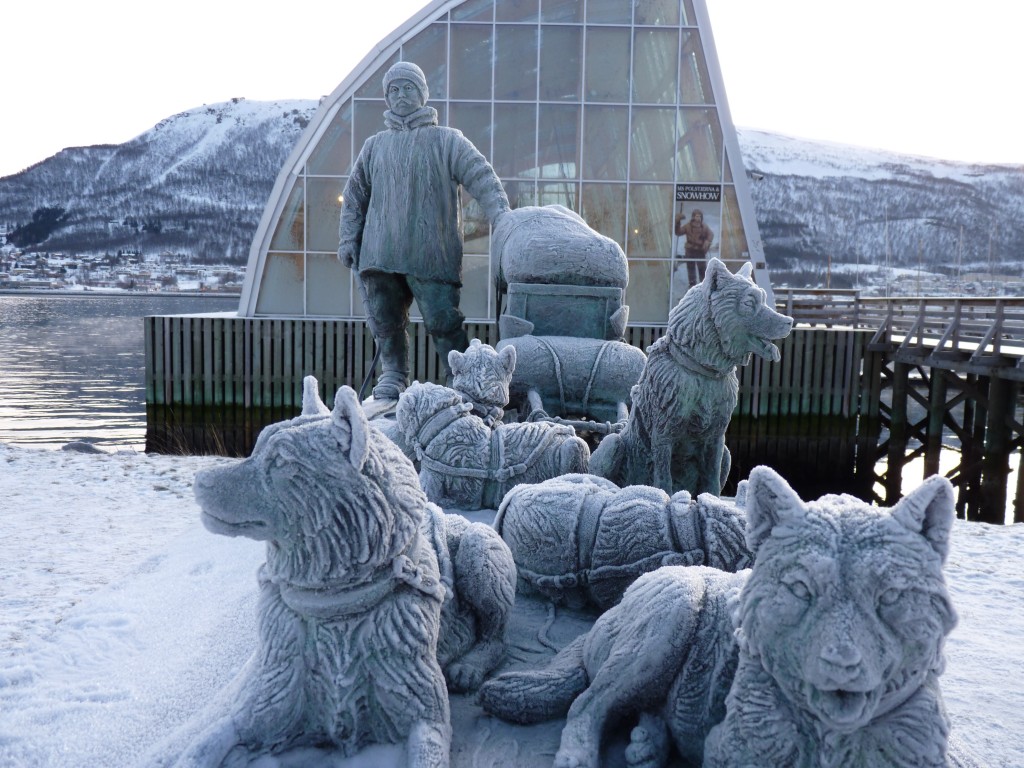
When Norwegian polar explorer Helmer Hanssen travelled in the early 20th century, the Arctic was a very different place. Statue in Tromso, close by Arctic Council headquarters. (I.Quaile)
20 years does not really seem like a long time. But when it comes to climate change in the Arctic, the last 20 years have brought more change than centuries gone by.
After the warmest winter in the Arctic since records began, the sea ice has declined to its second-lowest level ever. And the “second-lowest” tends to divert attention from the fact that the sea ice cover has dwindled to nearly 2.56m sq km less than the 1979 to 2000 average. That’s the size of Alaska and Texas combined.
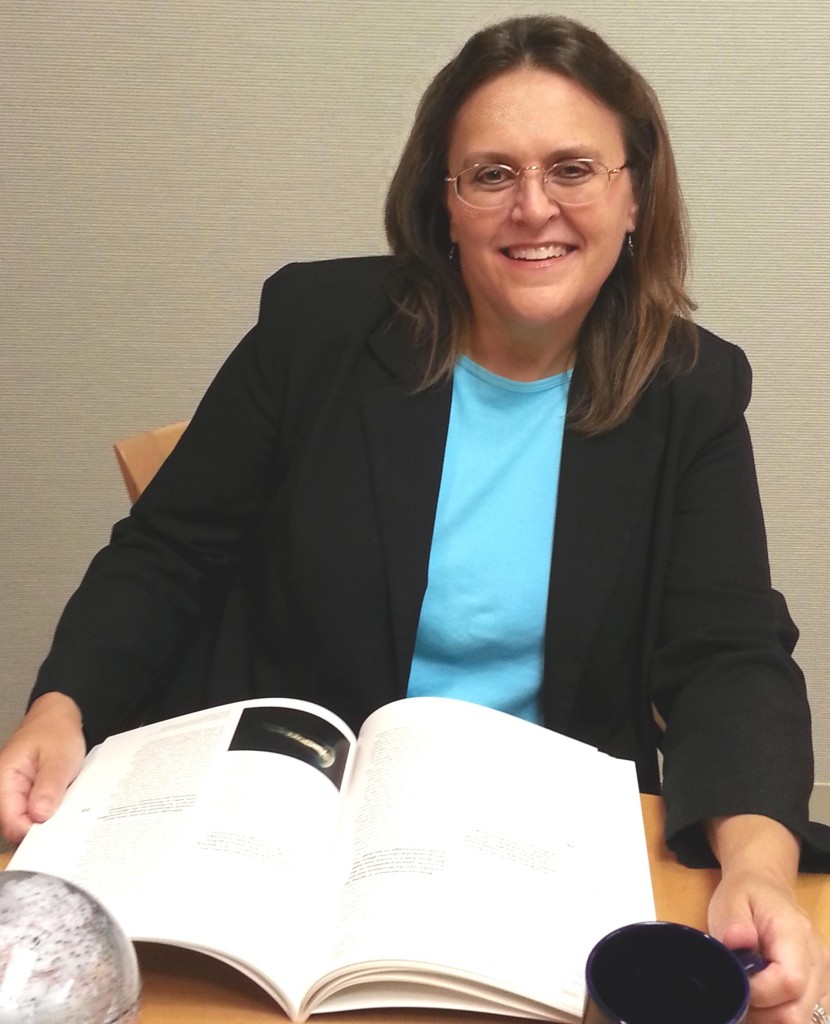
Julia Gourley, US Senior Arctic Official, has a background in environment policy. (Courtesy Arctic Council)
So the Arctic Council is celebrating its twentieth birthday at a time when concern over the impacts of planetary warming on the high north could hardly be greater.
I had the chance to interview Julia Gourley, the US Senior Arctic Official on the telephone ahead of the birthday. The US, of course, currently holds the two-year chairmanship of the body. I asked her how the Council had changed over the past 20 years.
“In the early days the Arctic state focused almost exclusively on environmental protection and science issues. But over the 20 years the countries have shifted the focus a bit. Certainly we still spend a lot of time trying to understand the environmental change that’s been going on. We spend much more time now on sustainable development issues, which in the Council generally refer to issues that affect the people of the Arctic, in particular the indigenous people. We’ve learned a lot in 20 years about the people who live there and the challenges they face.”
And those challenges are increasing all the time, especially because of the rapid pace of climate change.
Melting ice, easier access
The increase in human activity, as remote Arctic regions become more easily accessible has turned protecting the region into a whole new ball game. Gourley cites cruise ships, offshore oil and gas development , fishing and shipping as issues which have moved up the agenda.
Clearly, this means more work for the Arctic Council – and has also brought a lot more global interest in the region:
“We have 32 observer entities now, 12 of whom are countries. There are many more in the queue that are seeking observer status. What happens in the Arctic affects the entire planet, so countries all over the world are becoming interested in the region”.
With a big player like China taking a huge interest in the Arctic and looking to establish ports and secure its own access to the region, and political tensions between some of the Council members, such as Russia and the EU or the USA itself, the shadow of conflict always seem to be lurking in the background. Gourley is keen to play this aspect down. She stresses the key role of the Council in keeping the Arctic peaceful and encouraging cooperation. The USA, she says, welcomes the increasing interest by non-Arctic states – although, she adds, each of the Arctic states has their own views on that.
“We feel like we have a lot to learn as a group of Arctic states still about how the Arctic affects the rest of the world, and the more countries that are in the room listening to the discussion and learning from it and can contribute to it, the better. So we encourage non-Arctic countries that have particular expertise, to contribute to the work of the council – the scientific work, the technical work, economic work.”
Shared responsibilities
When it comes to regulating activities in the Arctic, the Council itself is not a regulatory body, but it contributes expertise to others.
“When it comes to shipping, the International Maritime Organisation is the regulatory authority all over the planet. But the Council has a strong interest in shipping in the Arctic, and so the Council has done some seminal work on the Arctic shipping situation, including a very important piece of work in 2009 called the Arctic Marine Shipping Assessment. That was the first time anyone in the world had looked deeply into the state of shipping in the Arctic in the face of climate change and reducing sea ice. That study is still cited today”.
When it comes to regulating offshore activities like mining and fishing, the Arctic states also have their own regulatory regimes, “ so it’s sort of a mix of regulatory activity by lots of different entities”, Gourley explains.
The US Arctic representative is bound, of course, to take up a diplomatic stance. But while she stresses the Council’s efforts to keep tensions low and foster cooperation rather than conflict, she does make one qualification:
“The tensions in other parts of the world haven’t affected the work of the Council. That said, of course we all have our own national views about a lot of the issues that face the Arctic. But as to working together as a group of eight countries, together with the observer states and NGOs, it really has worked quite well. We’ve managed to carve out a space that we can work in collaboratively. Now, that doesn’t mean that will always be the case. As things change in certain parts of the world it’s not easy to predict what could happen in the Arctic. But at least up to this point, we’ve been able to work together quite well.”
Balancing act
Presumably, with climate change having such a strong and rapid impact on the Arctic, there are bound to be increasing differences of opinion when it comes to striking a balance between preserving the Arctic as it is on the one hand, and on the other developing commercial and industrial activities. The US representative was quite realistic on this one:
“Yes, that’s a real tension. I think that chapter of the Arctic story is still being written. Each Arctic state comes at those questions in their own waters and their own exclusive economic zones differently, and each country’s regime is slightly different. So it’s hard to say there’s a single answer to how we resolve those questions. But it is something that is very real. It’s of concern in particular to a lot of Arctic indignous people, who want to live traditionally but also realize that modernity is moving into their world and in some cases economic development is very necessary to create good jobs and include living conditions. So it is a very real, very alive debate.”
Indeed. The Arctic conundrum in a nutshell.
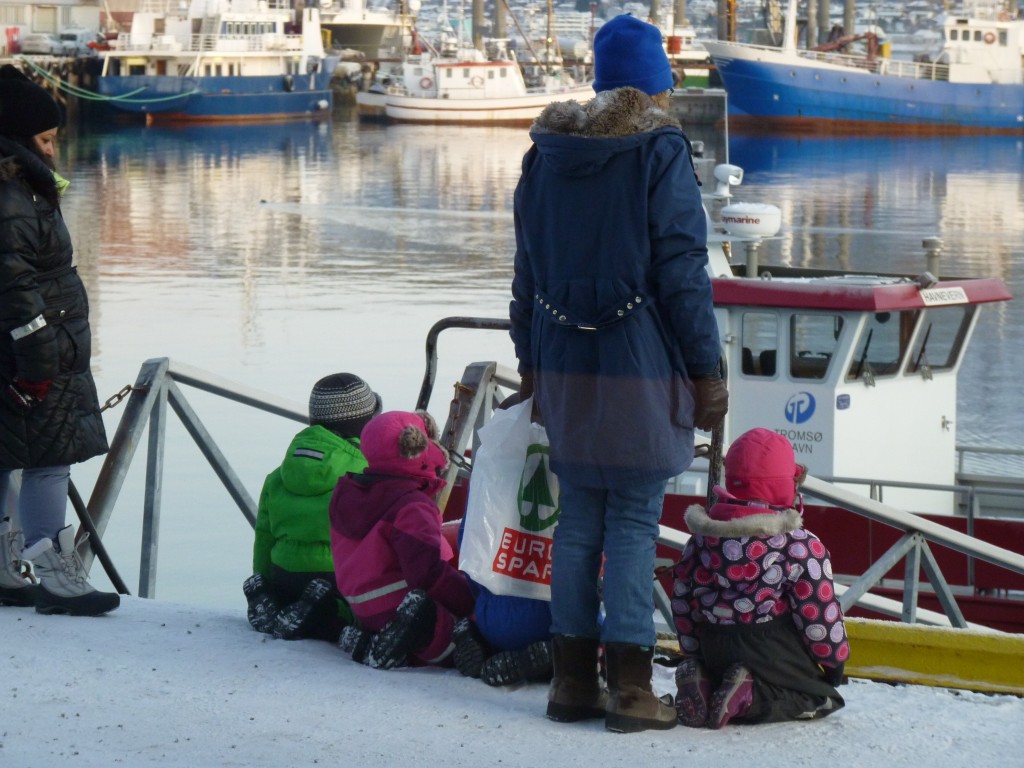
Arctiv development means jobs for the next generation. But can the fragile environment cope? (I.Quaile)
Tackling black carbon
What happens in the Arctic doesn’t stay in the Arctic – and pollution produced in the rest of the world doesn’t stay out of the Arctic.
While the UN has its own body tasked with combating climate change, there are other climate-forcing agents which affect the Arctic particularly strongly, such as black carbon or soot. The Arctic Council sees this as an area where it has a key role to play:
“Black carbon itself is not part of the UNFCCC, so it’s not part of any global regulatory regime. So we are working in the Council on ways to reduce black carbon emissions voluntarily. So I think that’s going to have some very positive results.”
At the end of our talk, I wanted to know whether optimism outweighed concern or vice versa when it comes to the future of the Arctic in our warming world. The answer didn’t surprise me. But the underlying sentiment that in spite of all the tension in the world and the feeling that climate change is gathering momentum and happening ever faster, we all have to pull together, is a message I can subscribe to:
“I think I feel optimistic in a way. Certainly, the melting that’s happening in the Arctic is potentially hugely problematic for the world. I think the science is pretty clear on that front. And it’s not going to change overnight. Even if the Paris Agreement is fully implemented right away, it’s a long time before the Arctic environment can stabilize. But when we have countries working together, if we can keep the conversation going, and we can encourage all of us in the Arctic and Arctic observer states, to work together to keep the conversation going, even if it’s slow, and to keep communication lines working, I think we do have room to be optimistic about that area of the world.”
The next 20 years are not likely to be less challenging than the last for the Arctic Council. On the contrary. You have your work cut out for you. Good luck – and happy birthday.
China, USA climate pledge – all talk, no action?

Arctic interest: China maintains a research station in Ny Alesund, Spitsbergen (Pic: I.Quaile)
In a blog post earlier this year, I mused on the danger of everybody sitting back saying, “Yes, we did”, while the planet continues to break all temperature records and fossil fuel emissions continue to rise, now that all the hype surrounding the Paris Climate Agreement in December has worn off. Back to business as usual?
It’s now September and China and the USA have made the headlines telling us they are ratifying the agreements. Of course nine months (since Paris) are tiny grains of sand in the giant egg-timer of planetary evolution. (Have those egg-timers themselves been consigned to the museum in our digital 21st century? Not important). But then again, we humans have “hotted up” the pace at which our climate, planet, atmosphere, ocean are changing dramatically.
Fireworks display or starting gun?
So how do I feel about the US-Chinese announcement? I wish I could say this makes me rejoice. Sure it’s a step in the right direction. And without action by these two top climate abusers, everybody else’s efforts would basically be worthless.
The agreement must be ratified by 55 parties representing 55 percent of total global emissions to enter into force. We are now at something like 25 parties and 40 percent of emissions, which gives ground for hope the agreement could enter into force by the end of the year.
But the proof, of the pudding lies, as always, in the eating.
The drivers of change
I have been convinced for some time that crippling air pollution will drive China to move away from fossil fuels.
I think back on an interview I recorded with Chinese expert Lina Li from the Adelphi thinktank in Berlin, when she told me she thought China’s air pollution problem would speed up the country’s ratification and implementation of the Paris Agreement. You were right, Lina!
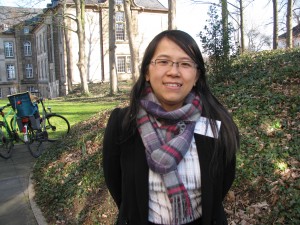
Lina Li from the Adelphi think-tank told me pollution concerns could speed up China’s climate action (Pic. I.Quaile)
As far as the USA is concerned, the outcome of the forthcoming election is clearly the key factor in determining how fast – or even whether – that country will move forward.
Doom and gloom?
Working on my Living Planet show for this week, I have been listening through reports on the Kuna people off the coast of Panama losing their island home to the waves, and how people in northwestern Kenya are starving because of changed rain patterns.
Forest fires, communities getting ready to “abandon home”, more extreme storms and flooding – these are all becoming so commonplace they are threatening to lose “news value”.
The CO2 concentration in the atmosphere is still climbing steadily. The global temperature is already one degree Celsius higher than it was at the onset of industrialization. That means very rapid action is needed to keep it to the agreed target of limiting warming to two degrees and preferably keeping it below 1.5 degrees.
A long, long way to go
Yes, the Paris Agreement was hailed widely as a breakthrough, with all parties finally accepting the need to combat climate change by reducing emissions of greenhouse gases. But so far, the emissions reductions pledged would still take the world closer to a three-degree rise in temperature.
Earlier this year, the International Energy Agency (IEA), issued a warning that governments can only reach their climate goals if they drastically accelerate climate action and make full use of existing technologies and policies. I wish I could say I could see this happening fast.
In my programme this week, I also have an interview my colleague Sonya Diehn conducted with Luke Sussams, from the UK-based think tank “Climate Tracker Initiative”. That is the group that came up with the term “stranded assets” which, in turn, inspired the Divestment movement.
He explains how it makes sound economic sense to shift investment out of coal and oil and into renewables. He thinks the clear advantages – less pollution, no greenhouse gas emissions, lower costs – are the best arguments to convince developing countries to “leapfrog” the fossil fuels stage and get into green energy – and into decentralized, off-grid solutions in a big way.
It’s the economy, stupid?
It seems those economic arguments are what we need. He cites the case of Rockefeller divesting from EXXON only after years of trying to convince them to change their policy on climate change. First, he argues, we should try to change things from within. If that fails, divestment may be the next option.
At the risk of seeming cynical, I have long believed that money is the key to saving the climate. The transition to a low-carbon economy is underway, but it will only succeed when governments and companies – and ultimately also consumers – realize it benefits their coffers and their pockets.
The technology is there. I am very doubtful about whether we will manage to get emissions to peak in time for us to keep to the 1.5 degree target which scientists have me convinced is what we need to do.
It seems we will need to move on to take some of the carbon out of the atmosphere using technologies now being tested – but no way ripe enough for mass implementation. I remember a Guardian interview with IPCC chief scientist Hoesung Lee a couple of months ago. He says we can still keep to the two-degree target, even if emissions do not peak by 2020, as ex- UN climate chief Christina Figueres maintained.
But he warned the costs could be “phenomenal”. He believes expensive and controversial geoengineering methods may be necessary to withdraw CO2 from the atmosphere and store it.
Meanwhile, that giant cruise-ship, the Crystal Serenity, is half-way through its controversial trip via the Northwest Passage. The operator says the trip is so successful and interest is so high they will do it again next year. They are unlikely to be foiled by a sudden onset of global cooling.
In scientific circles, the alarm bells are ringing over rising emissions from melting Arctic permafrost.
Did somebody say something about feedback loops and tipping points? Or do we just carry on regardless?
Arctic Sea Ice: going, going, gone?
July 15th is Arctic Sea Ice Day. You might be forgiven for not realizing that. Every day is the day of something (usually more than just one), the initiator, Polar Bears International, is popular, but maybe not yet a household name, and the world is in turmoil, with terrorist attacks, refugees, Brexit and no shortage of other topics dominating the news agenda.
Still, the Arctic sea ice deserves all the attention it can get.
Another record low
The latest data released by the US-based National Snow and Ice Data Center (NSIDC) for the month of June shows the Arctic sea ice reached yet another record low, the lowest extent for June ever measured since satellite records began in 1979. So far this year, every month except March has seen a record low in the extent of the Arctic sea ice.
Alaska is experiencing a massive heatwave after an amazingly warm first half of the year.
An article on RCI’s Eye on the Arctic says the sea ice melt seems to be attributable to unusual weather patterns over the Arctic. It seems the temperature reached an incredible 29.2 degrees in Kugluktuk, Nunavut on June 5th, 27 on July 6th. Normally, the article tells us, the temperature in western Nunavut varies between 8 and 15 degrees. It is not hard to imagine how this is making the sea ice ooze away. The reflective white ice is replaced by dark ocean, which absorbs even more heat, exacerbating the warming further.
Ice, sea, sky on Living Planet
That is just one of the issues I talked about in my interview with UN science and oceans advisor Susan Avery, which featured in the last Iceblog post. The interview is broadcast in full (well not quite full, but at length), in the latest edition of DW’s Living Planet programme: Ice, Sea and Sky, which I hosted in our Bonn studio. Avery talks about how climate change affects the ocean in general, as well as focusing in particular on what is happening in the Arctic.
“I would say the polar regions are regions where we don’t have a lot of time before we see major, massive changes, where we really need to get our observations and science and models working together”, Avery told me.
Message from Iqaluit
Actually, major, massive changes seem to be already there. Marking Arctic Sea Ice Day, the Living Planet program includes a story by Canadian reporter Elyse Skura, based at Iqaluit, in the northern territory of Nunavut. She talks to local Inuit people about how climate change is affecting their daily lives, and especially traditional livelihoods like hunting and fishing. Hearing the voices of people there talking about the changes in the sea ice and the extent to which their traditional livelihoods are inter-connected with nature, with the environment, land, ocean, ice, atmosphere, I was reminded of my own encounter with the Inupiat people in Barrow, Alaska, back in 2008. The observations are similar. The only difference seems to be that the ice is melting even faster as the Arctic warms more rapidly.
The story ends on a kind of optimistic note, suggesting that the Inuit have always been able to adapt to changing environments. Ultimately, people have no choice but to adapt to a climate that is already changing. Susan Avery told me the extra heat produced by our CO2 emissions ends up mostly in the ocean. 93 percent was the figure she quoted. And she explained how it does not stay at the surface, where it will likely hang around for 40 or 50 years, but is also pumped down to the depths in the course of circulation patterns. And there, she says, it will stay for centuries. It is frightening to think that some scientists believe this means we are already committed to a temperature rise of up to two degrees Celsius.
“No job for an optimist”
I remember discussing the issues of “mitigation and adaptation” in detail in connection with climate change – in an interview with the “new” head of the UNFCCC, the climate secretariat, Yvo de Boer, in 2006. I have always been worried that adaptation could mean abandoning the need to mitigate, to change our behavior and lifestyles and shift to a low-carbon (and ultimately zero-carbon) economy. De Boer convinced me then that adaptation was essential, with climate impacts already visible and tangible. He stressed it was not a case of either-or, but of doing both. How right he was.
But of course he resigned in frustration after the disastrous Copenhagen conference. “No job for an optimist” was the title I gave my commentary at that time.
(Looking back at that, it’s interesting to see how web design has changed since then!)
When the abnormal becomes the norm
So, back to the Arctic Sea Ice, this July 15. A group of scientists studying Arctic systems met in Washington D.C. earlier in the week at an event in the National Press Club sponsored by SEARCH (the Study of Environmental Arctic Change).
Chris Mooney reports on it in The Washington Post, under the title ‘The extraordinary years have become the normal years’. This is something I also hear repeatedly from experts I interview on extreme weather events and similar occurrences.
Mooney quotes Marco Tedesco from Columbia University, a Greenland scientist:
“I see the situation as a train going downhill. And the feedback mechanisms in the Arctic are the slope of your hill. And it gets harder and harder to stop it.”
NASA scientist Walt Meier, who studies Arctic sea ice in particular, is quoted as saying we have lost about twice the size of Alaska in terms of area. He also notes we’ve lost about 50 percent of the thickness. The particularly alarming thing is that all this is happening faster than “even the most aggressive climate models”, says Meier.
Mooney also mentions a 2014 study indicating that in the past three decades, the loss of Arctic sea ice has added 25 percent to the warming caused by carbon dioxide in the atmosphere. A stunning figure! That indicates the extent of the feedback effects coming out of the high North – which should really make us sit up, pay attention and then get moving on cutting greenhouse gas emissions this ArcticSeaIceDay.
Earth Day, Climate pact signing – and the Arctic?
How are you feeling this Earth Day? In some ways it could mark a turning point for the planet, with some 165 countries signing the Paris climate treaty at UN headquarters in New York. But, as, always, the proof of the pudding will be in the eating. And so far, I’m not sure it is quite tasty enough.
The trouble is, signing agreements alone is not enough. They have to be turned into action. The world is heating up way too fast, and the transition to an emissions-free world is far too slow. Yes, we can do it, I am convinced. But as well as the political will to sign an agreement, we need the political will to implement measures which will be unpopular with businesses and consumers because they mean major changes to how we work, trade and live.
In the meantime, the Arctic is facing a decline in sea ice that could equal or even beat the negative record of 2012.
Sea ice physicists from the Alfred Wegener Institute, Helmholtz Centre for Polar and Marine Research (AWI), have evaluated current satellite data on the thickness of the ice cover. The data show that the Arctic sea ice was already extraordinarily thin in the summer of 2015 and comparably little new ice formed during the past winter. Speaking at the annual General Assembly of the European Geosciences Union in Vienna, AWI sea ice physicist Marcel Nicolaus said data collected by the CryoSat-2 satellite revealed large amounts of thin ice that are unlikely to survive the summer.
Hard to forecast
Predicting the summer extent of the Arctic sea ice several months in advance still poses a major challenge to scientists and meteorologists. Between now and the end of the melting season, the fate of the ice will ultimately be determined by the wind conditions and air and water temperatures during the summer months. However, conditions during the preceding winter lay the foundations.The AWI scientists say this spring, conditions are as “disheartening as they were in 2012”, when the sea ice surface of the Arctic went on to reach a record low of 3.4 million square kilometres.
At the end of March, the Arctic sea ice was at a record low winter maximum extent for the second straight year, according to scientists at the National Snow and Ice Data Center (NSIDC) and NASA. Air temperatures over the Arctic Ocean for the months of December, January and February were 2 to 6 degrees Celsius (4 to 11 degrees Fahrenheit) above average in nearly every region.
This year’s maximum winter extent was 1.12 million square kilometers (431,000 square miles) below the 1981 to 2010 average of 15.64 million square kilometers (6.04 million square miles) and 13,000 square kilometers (5,000 square miles) below the previous lowest maximum that occurred last year.
The September Arctic minimum began drawing attention in 2005 when it first shrank to a record low extent over the period of satellite observations. It broke the record again in 2007, and then again in 2012. The March Arctic maximum tended to attract less attention until last year, when it was the lowest ever recorded by satellite.
Ice conditions “catastrophic”
Recently, here on the Ice Blog, I published an account by Larissa Beumer, one of a team of Arctic experts on board the Greenpeace ship the Arctic Sunrise, which has been checking the ice conditions the Arctic archipelago of Spitsbergen. From the ship, she told me the ice conditions were “catastrophic and way outside of normal variations”. She reported transport problems, with many of the usual routes inaccessible by dog sled or snow mobile. She talked of a lack of ice in places where navigation is usually impossibly up to June or July.
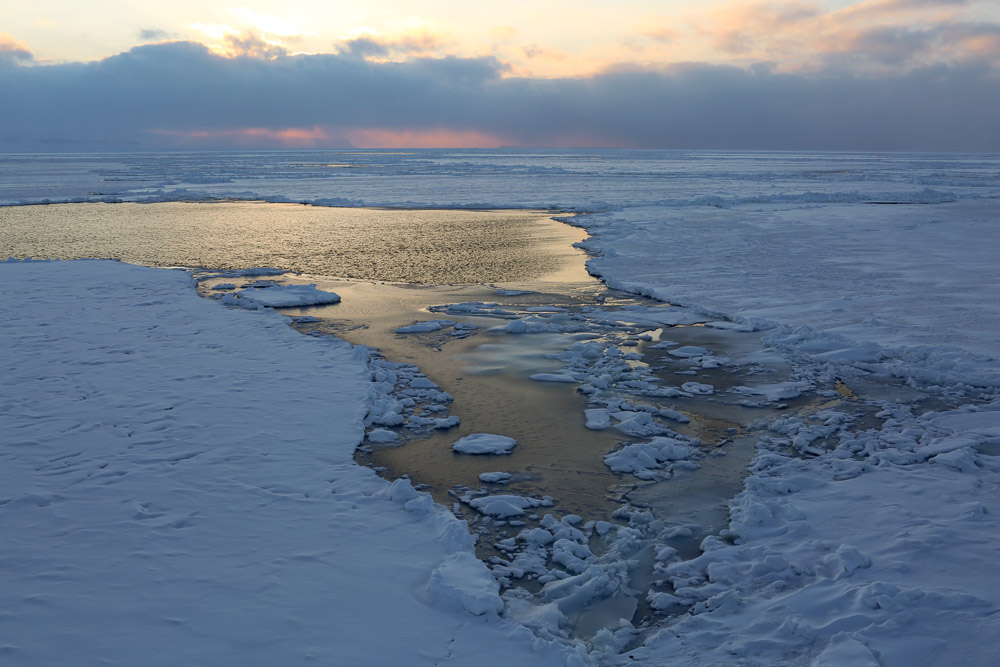
Ice and open water, photographed by Nick Cobbing for Greenpeace, from the Arctic Sunrise, off Spitsbergen.
On thin ice
AWI scientist Marcel Nicolaus says new ice only formed very slowly in many regions of the Arctic, on account of the particularly warm winter.
“If we compare the ice thickness map of the previous winter with that of 2012, we can see that the current ice conditions are similar to those of the spring of 2012 – in some places, the ice is even thinner,” he told journalists at the Vienna Geosciences meeting.
Nicolaus and his colleague Stefan Hendricks evaluated the sea ice thickness measurements taken over the past five winters by the CryoSat-2 satellite for their sea ice projection. They also used data from seven autonomous snow buoys, which they placed on ice floes last autumn. These measure the thickness of the snow cover on top of the sea ice, the air temperature and air pressure. A comparison of their temperature data with AWI long-term measurements taken on Spitsbergen has shown that the temperature in the central Arctic in February 2016 exceeded average temperatures by up to 8 °Celsius.
Breaking ice record
In previously ice-rich areas like the Beaufort Gyre off the Alaskan coast or the region south of Spitsbergen, the sea ice is considerably thinner now than it normally is during the spring. “While the landfast ice north of Alaska usually has a thickness of 1.5 metres, our US colleagues are currently reporting measurements of less than one metre. Such thin ice will not survive the summer sun for long,” Stefan Hendricks said.
The scientists say all the available evidence suggests that the overall volume of the Arctic sea ice will be decreasing considerably over the course of the coming summer. They suspect the extent of the ice loss could be great enough to undo all growth recorded over the relatively cold winters of 2013 and 2014. “If the weather conditions turn out to be unfavourable, we might even be facing a new record low,” Stefan Hendricks said.
So the AWI researchers fear we are going to see a continuation of the dramatic decline of the Arctic sea ice throughout 2016. From that point of view, the signing of Paris climate pact comes way too late. UN Secretary-General Ban ki-Moon is stressing that this can only be the beginning, and that the mammoth task of decarbonising the economy still lies ahead. Here’s hoping the Paris Agreement will not just be a piece of paper which governments use to salve their consciences. Here in Germany, people are concerned that the government will not reach its ambitious climate targets at the present pace. Given that this country has already made remarkable progress in the transition to renewable energy for its electricity production, that is a worrying trend. And other major emitters still have even more to do if that two degree, let alone the 1.5 degrees Celsius limit to global warming is to be more than a very hot piece of pie in the steadily warming sky.
Arctic future: not so permafrost
“A glance into the future of the Arctic” was the title of a press release I received from the Alfred Wegener Institute this week, relating to the permafrost landscape.
“Thawing ice wedges substantially change the permafrost landscape” was the sub-title.
“I felt the earth move under my feet…” was the song line that came to my mind.
The study was led by Anna Liljedahl of the University of Alaska in Fairbanks. And Fairbanks is, indeed, where I would like to have been this past week, with Arctic Science Summit Week taking place.
Arctic Council in Fairbanks
Clearly the Arctic Council thought the same and actually managed to put their wish into practice by holding a meeting of the Senior Arctic Officials (SAOs) there from March 15th to 17th. The agenda focused to a large extent, it seems, on climate change, and “placing the Council’s overall work on climate change in the context of the COP21 climate agreement” reached in Paris in December, according to a media release.
“The Council needs to consider how it can continue to evolve to meet the new challenges of the Arctic, particularly in light of the Paris Agreement on climate change. We took some steps in that direction this week”, said Ambassador David Balton, Chair of the SAOs.
Now what exactly does that mean? The Working Groups reported “progress on specific elements”. They include the release of a new report on the Arctic freshwater system in a changing climate, “cross-cutting efforts aimed at preventing the introduction of invasive alien species”, strengthening the region’s search and rescue capacity, efforts to support a pan-Arctic network of marine protected areas and promoting “community-based Arctic leadership on renewable energy microgrids”. I suppose those could be part of the process. Clearly there are a lot of interesting things going on.
NOAA’S latest – not so cheery
Against the background of NOAA’s latest revelations on global temperature development, though, they may have to speed up the pace. The combined average temperature over global land and ocean surfaces for February 2016 was the highest for February in the 137-year period of record, NOAA reports, at 1.21°C (2.18°F) above the 20th century average of 12.1°C (53.9°F). This was not only the highest for February in the 1880–2016 record—surpassing the previous record set in 2015 by 0.33°C / 0.59°F—but it surpassed the all-time monthly record set just two months ago in December 2015 by 0.09°C (0.16°F).
Overall, the six highest monthly temperature departures in the record have all occurred in the past six months. February 2016 also marks the 10th consecutive month a monthly global temperature record has been broken. The average global temperature across land surfaces was 2.31°C (4.16°F) above the 20th century average of 3.2°C (37.8°F), the highest February temperature on record, surpassing the previous records set in 1998 and 2015 by 0.63°C (1.13°F) and surpassing the all-time single-month record set in March 2008 by 0.43°C (0.77°).
Here in Germany, the temperature was 3.0°C (5.4°F) above the 1961–1990 average for February. NOAA attributes it to a large extent to strong west and southwest winds. Now that is a big difference, and I can certainly see it in nature all around. But the difference was more than double that in Alaska. Alaska reported its warmest February in its 92-year period of record, at 6.9°C (12.4°F) higher than the 20th century average.
Why worry about wedges?
So, back to Fairbanks, or at least to the changing permafrost in this rapidly warming climate, which was on the agenda there at the Arctic Science Summit Week. (See webcast.)
The study, published in the journal Nature Geoscience, conducted by an international team in cooperation with the Alfred Wegener Institute, Helmholtz Center for Polar and Marine Research (no wonder we prefer to call them AWI), indicates that ice wedges in permafrost throughout the Arctic are thawing at a rapid pace. The first thought that springs to my mind is collapsing buildings, remembering seeing cooling systems in Greenland to keep the foundations of buildings in the permafrost frozen and so stable. Of course that only affects areas which are built upon (certainly bad enough). The new study looks at what the melting ice wedges will mean for the hydrology of the Arctic tundra. And that impact will be massive, the scientists say.
The ice wedges go down as far as 40 metres into the ground and have formed over hundreds or even thousands of years, through freezing and melting processes. Now the researchers have found that even very brief periods of above-average temperatures can cause rapid changes to ice wedges in the permafrost near the surface. In nine out of the ten areas studied, they found that ice wedges thawed near the surface, and that the ground subsided as a result. So, once more, humankind is changing what nature created over thousands of years in a very short space of time. I am reminded of a recent study indicating that our greenhouse gas emissions have even postponed the next ice age.
A dry future for the Arctic?
“The subsiding of the ground changes the ground’s water flow pattern and thus the entire water balance”, says Julia Boike from AWI, who was involved in the study. “In particular, runoff increases, which means that water from the snowmelt in the spring, for example, is not absorbed by small polygon ponds in the tundra but rather is rapidly flowing towards streams and larger rivers via the newly developing hydrological networks along thawing ice wedges”. The experts produced models which suggest the Arctic will lose many of its lakes and wetland areas if the permafrost retreats.
Co-author Guido Grosse, also from AWI, says the thaw is much more significant that it might first appear. The changes to the flow pattern also change the biochemical processes which depend on ground moisture saturation, he says.
The permafrost contains huge amounts of frozen carbon from dead plant matter. When the temperature rises and the permafrost thaws, microorganisms become active and break down the previously trapped carbon. This in turn produces the greenhouse gases methane and carbon dioxide. This is a topic already well researched, at least with regard to slow and steady temperature rises and thawing of near-surface permafrost, the authors say. But the thawing of these deep ice wedges will lead to massive local changes in patterns. “The future carbon balance in the permafrost regions depends on whether it will get wetter or dryer. While we are able to predict rainfall and temperature, the moisture state of the land surface and the way the microbes decompose the soil carbon also depends on how much water drains off”, says Julia Boike.
Now the results of the research have to be integrated into large-scale models.
The study of the impacts of thawing ice wedges seems to me like a good metaphor for the relation between Arctic climate change and what’s happening to the planet as a whole. Something changes in a localised area, which turns out to have far greater significance for a much wider area of the planet (or even the whole).



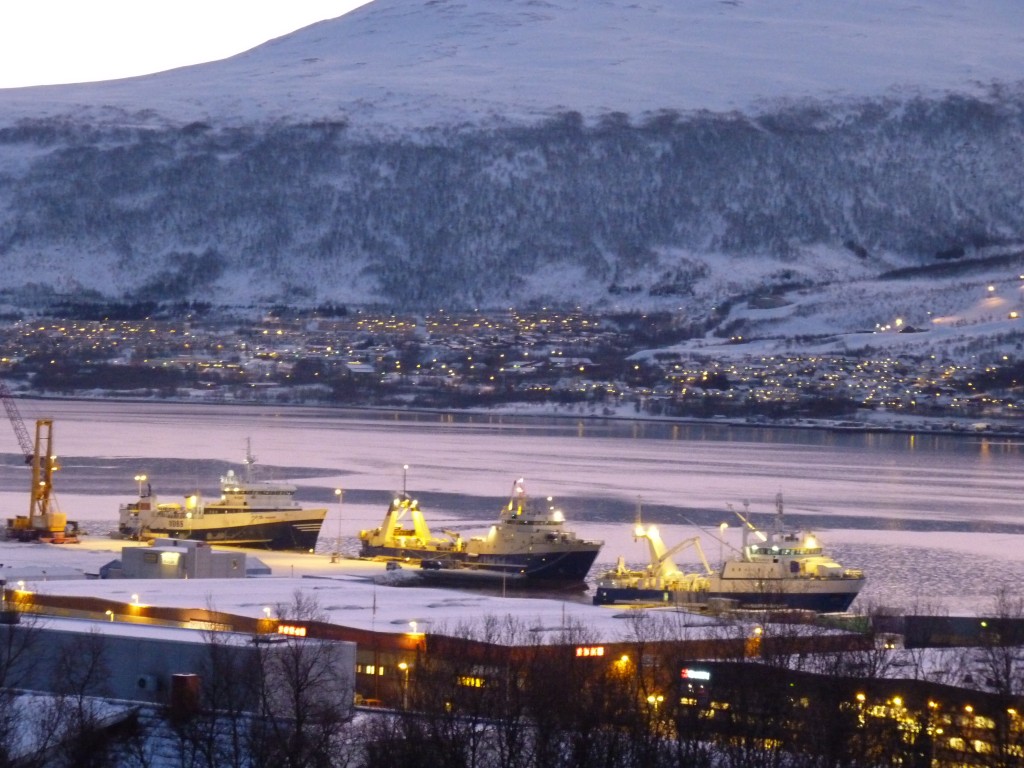
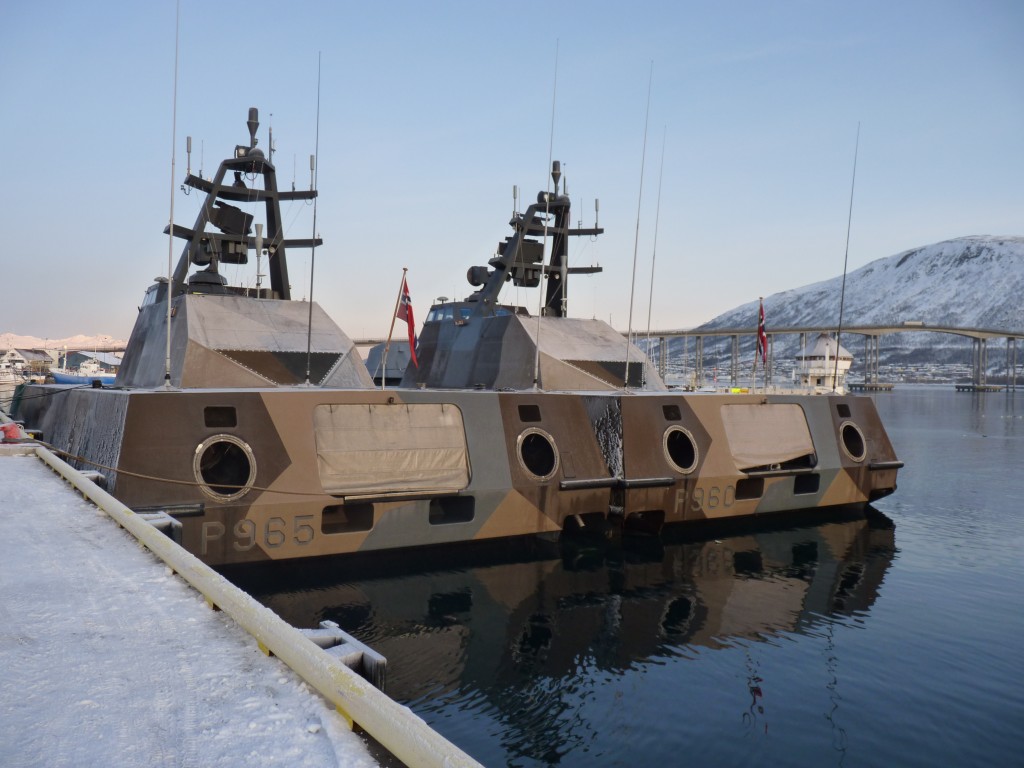
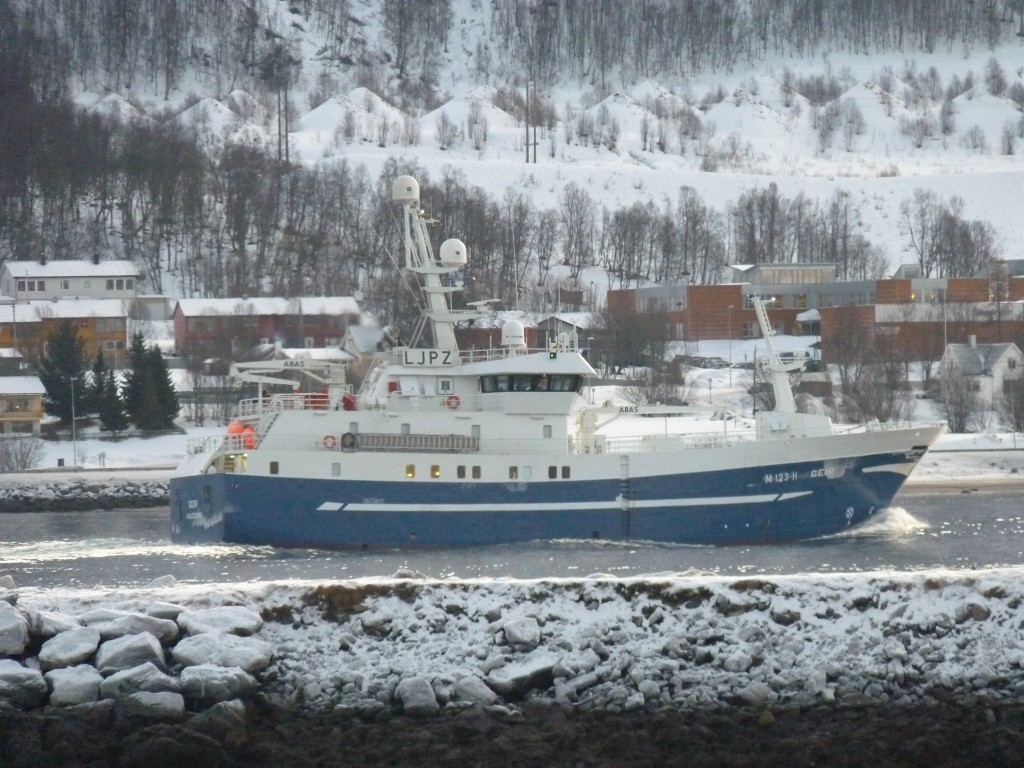


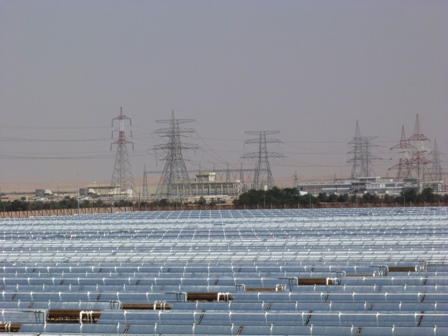
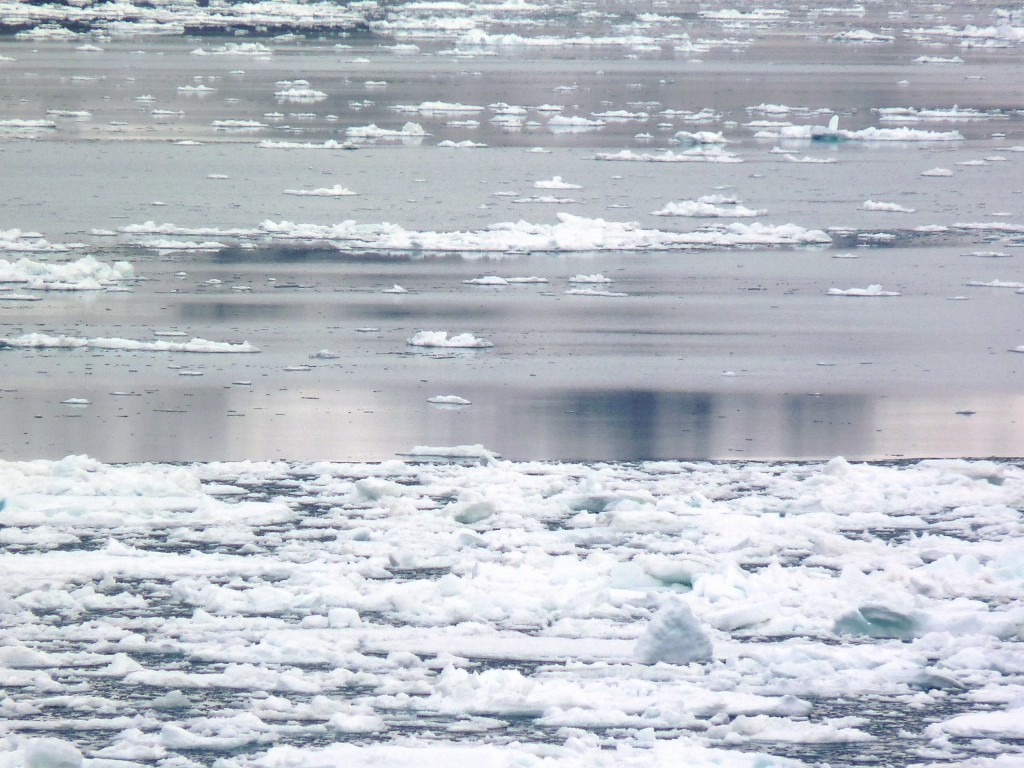
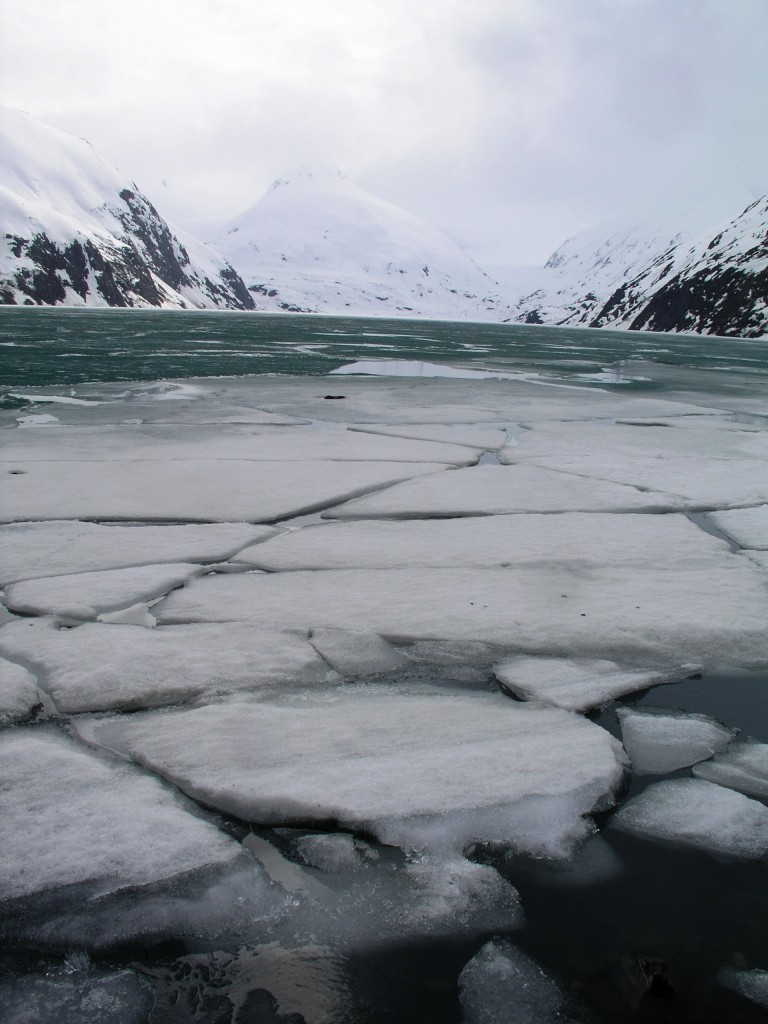
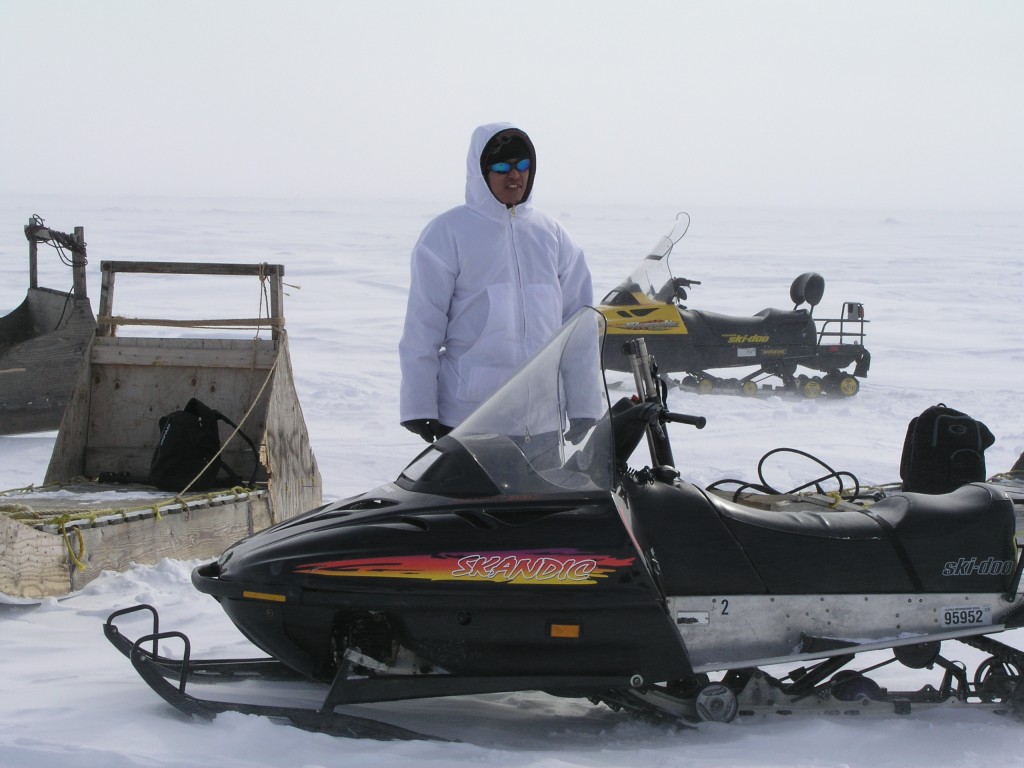
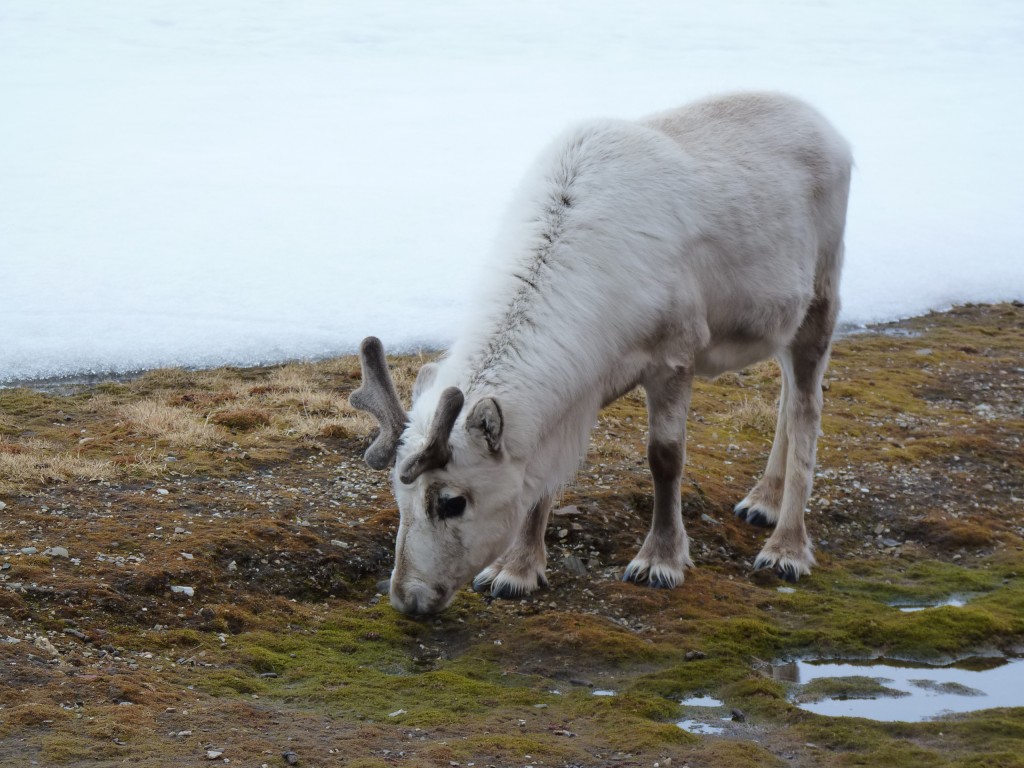
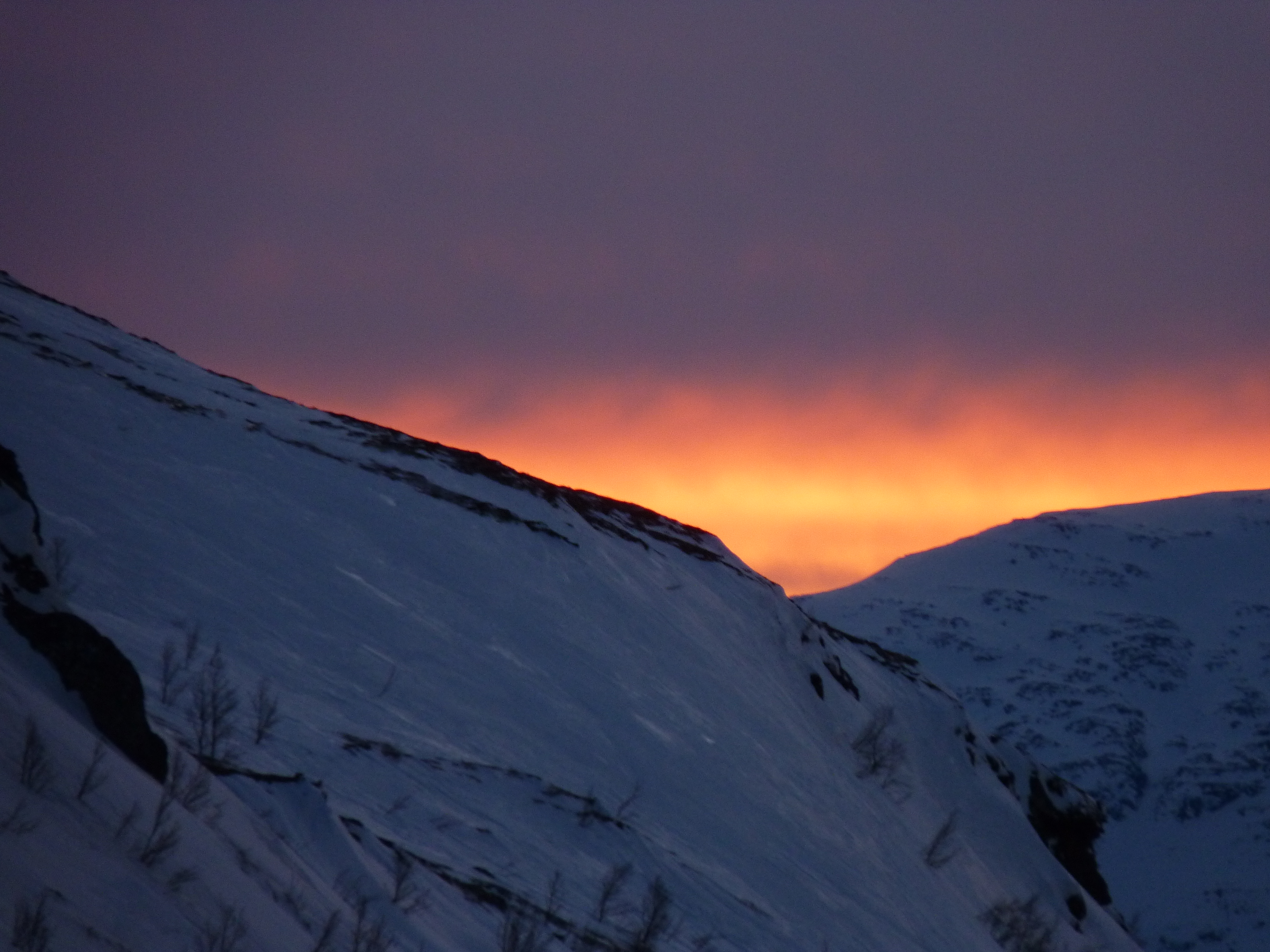
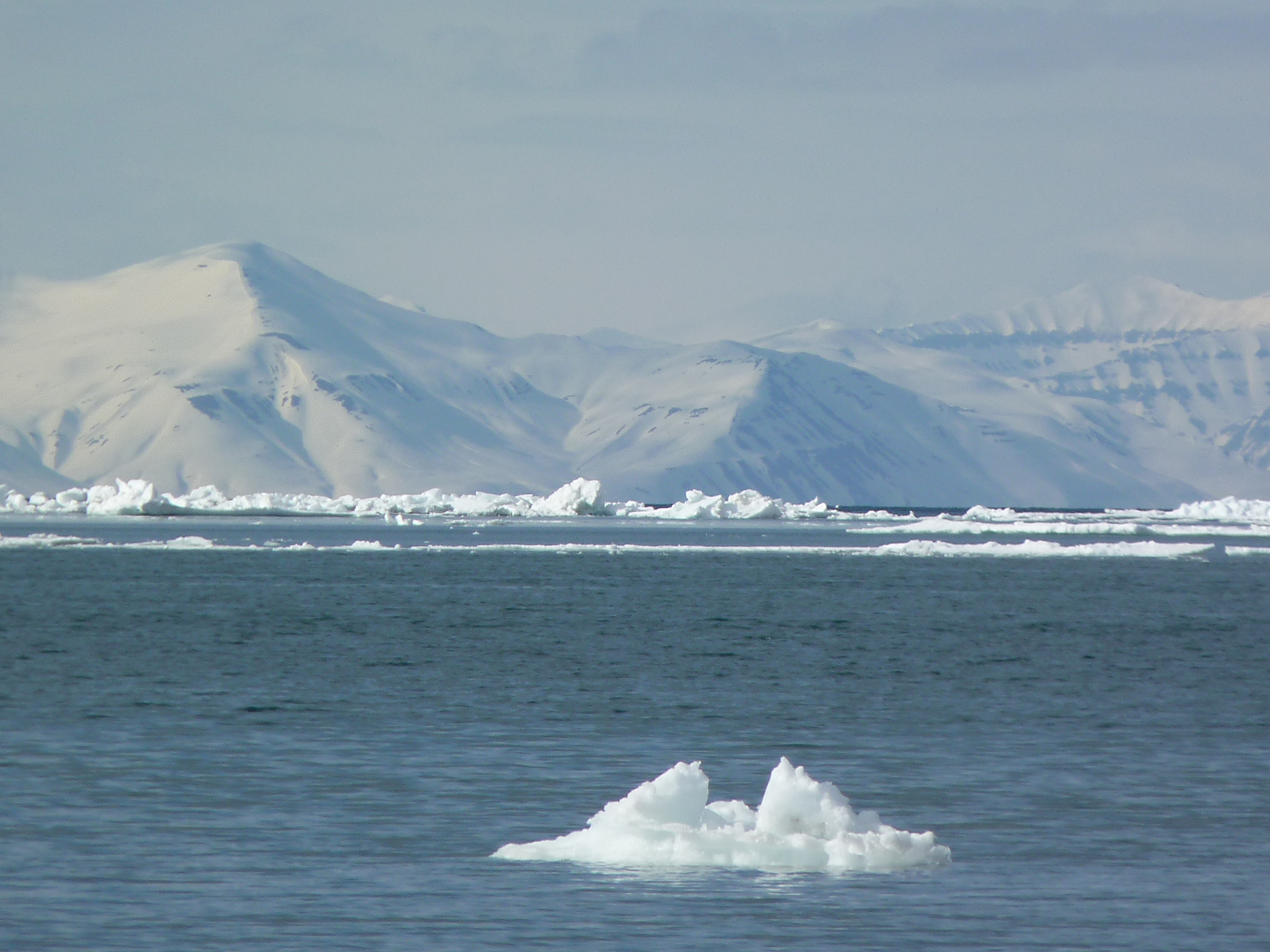
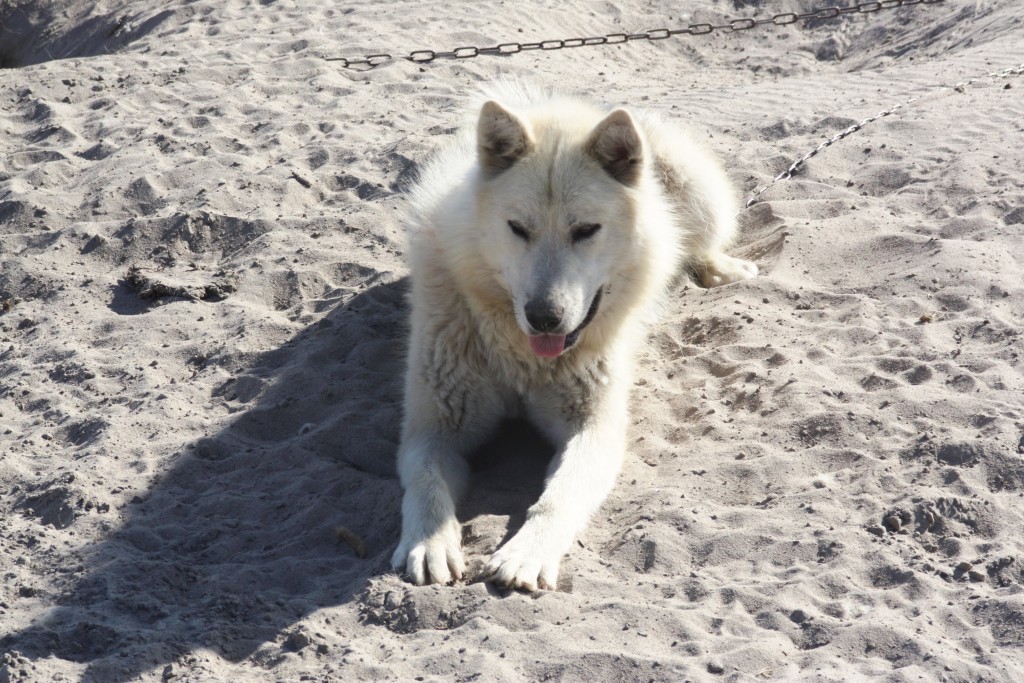

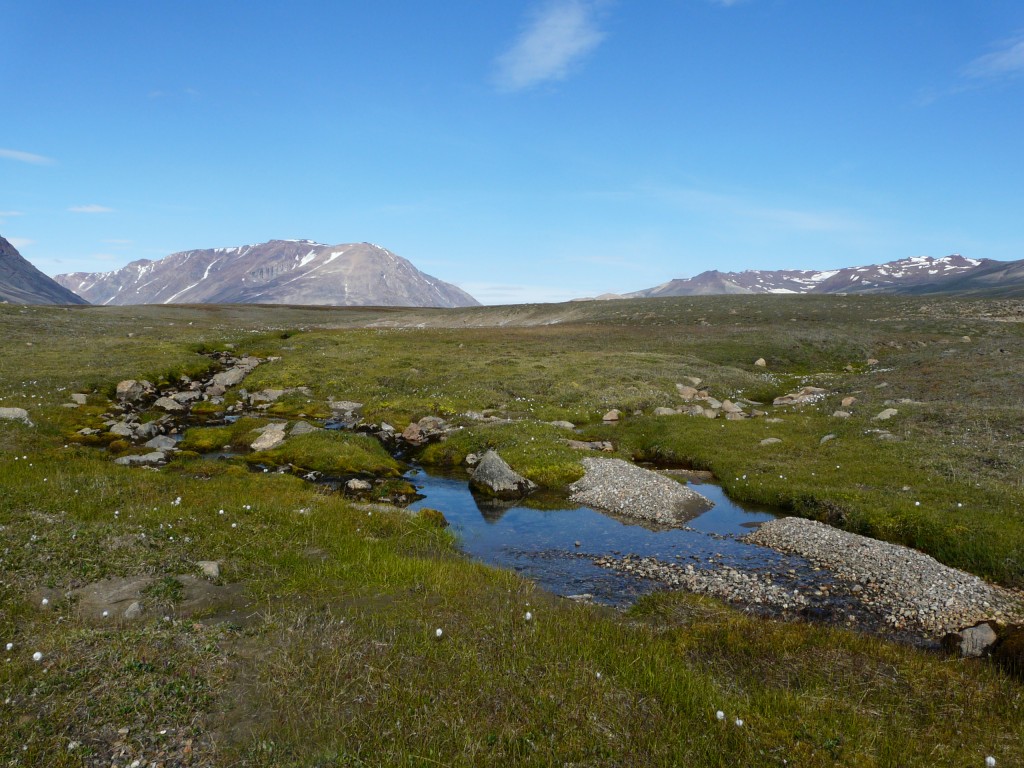
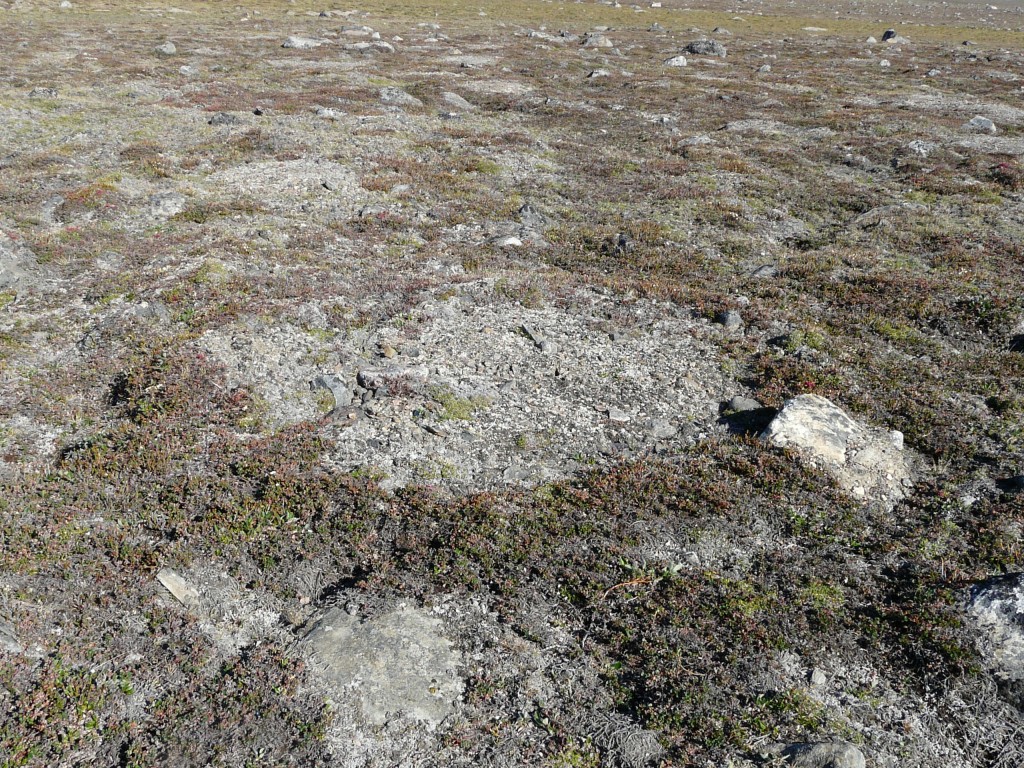
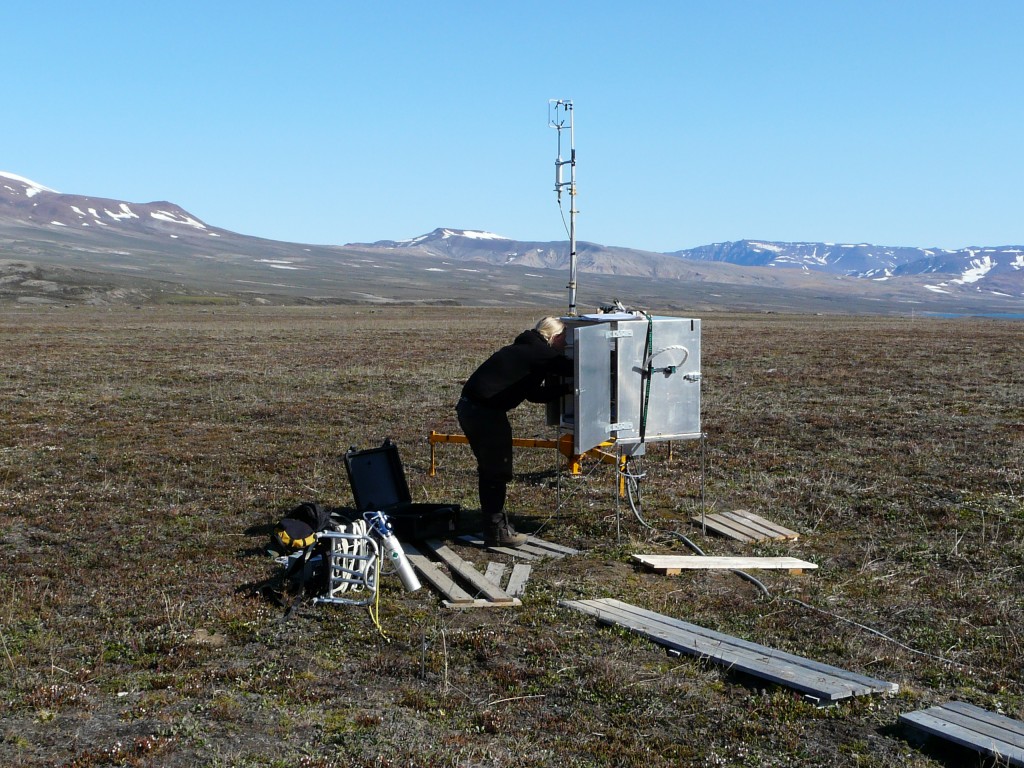
















Feedback